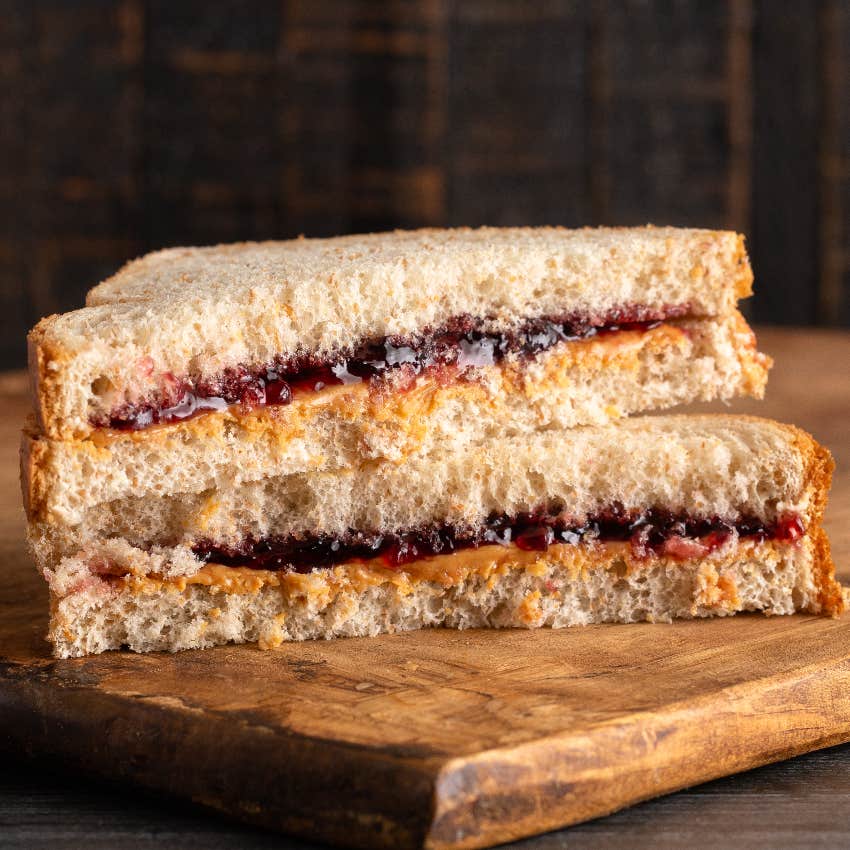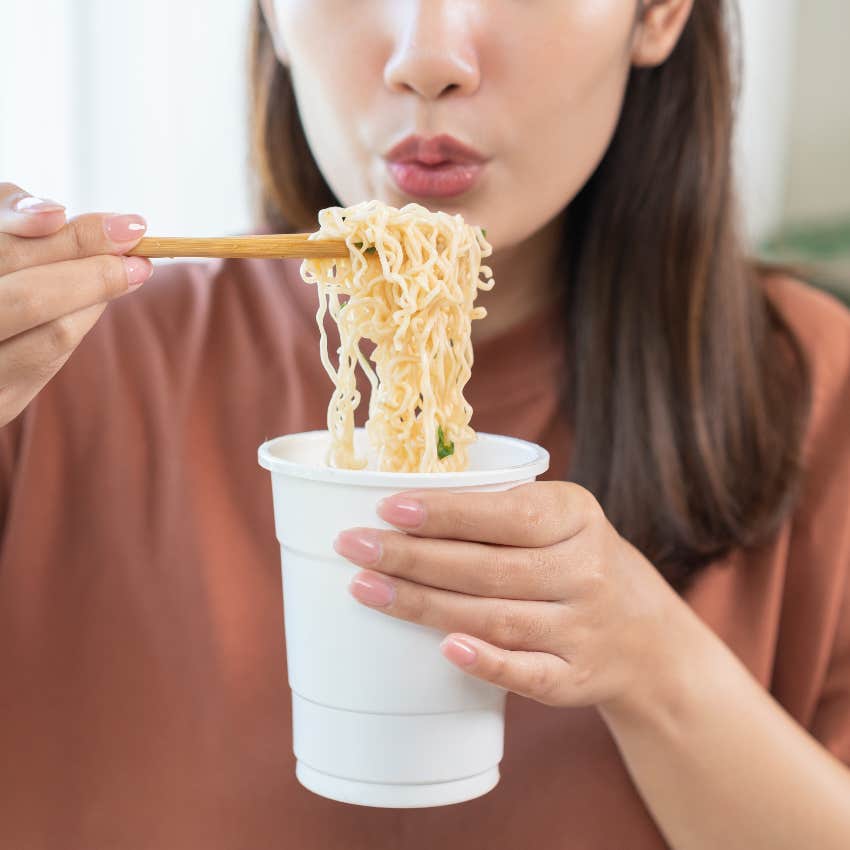8 ‘Poverty Foods’ People Admit They’ve Continued To Eat, Even After Becoming Financially Comfortable
No matter their financial situation, these are the foods people can’t help but reach for.
 MilanMarkovic78 | Shutterstock
MilanMarkovic78 | Shutterstock In the “Poverty Finance” subReddit, which houses financial advice and stories for people in low-income situations, one poster opened up a discussion about “poverty foods.”
"We all have that one go-to food that brings us comfort, no matter our financial situation," they wrote. "What’s your poverty food that you always enjoy?"
Based on the answers, a few things are clear. Despite their inexpensive price tags, many people still yearn for comfort meals that defined their childhoods. From Spam to PB&J sandwiches, some things just never get old.
Here are 8 ‘poverty foods’ people admit they’ve continued to eat despite becoming financially comfortable:
1. Peanut butter and jelly sandwiches
 P Maxwell Photography | Shutterstock
P Maxwell Photography | Shutterstock
"I just finally had a PB&J two weeks ago after not having one since I was maybe 12," one commenter shared. "Now I can’t stop eating them."
Considering the affordability of canned jam, bread, and peanut butter, these sandwiches are hallmarks of many low-income people’s childhood meals. They’re equally tasty and satiating and hold a great deal of memories for many, from school lunches to after-school snacks.
Other comments suggest ways to “adult-ify” the traditional PB&J sandwich, recommending a fried version or an upgraded jelly from an organic store.
2. White rice, butter, and salt
One of the most common responses on the thread was a simple meal choice: white rice. Yet, in adulthood, many opt for new tasty seasonings instead of the simple butter and salt of their childhoods.
One user recommended topping a bowl of white rice with "savory Vietnamese soy sauce and two eggs over easy," while another commenter simply suggested butter and hot sauce. Others take their upgrade a step further, replacing the basic food with takeout that includes rice, like Indian or Chinese.
3. Fried egg sandwiches
 SeventyFour | Shutterstock
SeventyFour | Shutterstock
Once a frugal staple for many families' meal plans, fried egg sandwiches have now become almost a “luxury,” considering the drastic rise in egg and grocery prices in recent years.
“I don’t really think of it as a poverty food,” one person wrote. “I just think of it as good food.”
Being tasty, easy to make, relatively high in nutritional content, and once-inexpensive, it makes perfect sense why fried egg sandwiches were labeled as a “poverty food.” It also makes perfect sense why people still prefer them today.
4. Tomato sandwiches
Once cost-effective with cheap produce and white bread, tomato sandwiches were the perfect quick meal for a large family, especially in the South, where this recipe originated.
“Mayo, pepper, and whatever other seasoning I’ve got, tomato, and two slices of bread," one Redditor recited. "Cheap, and if you cut the tomato thick enough, it feels like you’re eating something real.”
Yet, with the price of produce rising in the United States, even this basic poverty meal is becoming less accessible. Many people who have reached financial stability are opting for alternative routes to fulfilling this comfort meal — almost 55% of Americans have some kind of garden that they rely on for produce.
5. Spam
 calimedia | Shutterstock
calimedia | Shutterstock
Spam, a brand of processed canned pork and ham, was introduced to Americans in 1937 as a budget-friendly wartime meat. But, even today, Spam is a popular cost-effective option for anyone looking to save money on groceries.
According to Spam's website, 12.8 cans of Spam products are eaten every second.
Although many on Reddit admitted to the shame and disgust they held for the meat as kids, their adult selves hold the meal in high regard. With its long shelf-life, convenience, and affordability, the options are endless.
Some users suggested Spam and eggs. One commenter recommended pairing Spam with rice and seaweed, a take on the Hawaiian Spam-based dish Musubi. Others simply advised frying the canned meat.
6. Cinnamon sugar toast
If you grew up in a lower-income home, you already know all about the delicacy of cinnamon sugar toast — and if you don’t, you’re missing out.
“It’s so simple but SO satisfying,” one person wrote.
With white toast, butter, and a cinnamon sugar concoction, this sweet treat makes a great breakfast or dessert. Some commenters admitted their parents tried to pass it off as a “French toast substitution” during childhood.
7. Instant ramen cups
 Kmpzzz | Shutterstock
Kmpzzz | Shutterstock
Whether it’s a “Cup of Noodles” in the microwave or a packet of ramen on the stove, many commenters agree everything about this meal is comforting as an adult. Once the only option for dinner, these adults admit they constantly reach for it as a comfort while sick or as a reminder of their childhood family meals.
“I remember the smell from the stovetop so vividly," one commenter wrote. "It’s the best kind of comfort when I’m missing home.”
Whether it’s ramen or something entirely different, comfort meals provide a sense of solace when you’re yearning for nostalgia, your home, or a parent. Research even suggests that comfort foods can make people feel a sense of "belongingness," which is exactly why so many “financially stable” people still reach for these so-called poverty foods
8. Baked potatoes with kitchen sink toppings
While “jacket potatoes,” better known as baked potatoes in the U.S., have become interestingly trendy and popular online, many people on this Reddit thread admitted that they were the pinnacle “low-income meal” of their childhoods.
With loads of margarine, seasonings, and even sometimes, shredded cheese, baked potatoes were not only cheap but incredibly tasty and filling. Of course, the options are endless now, whether the potatoes are topped with baked beans, fresh produce, organic cheese, or the staples from their old meals.
Regardless of their current financial stability, many people reach for these so-called poverty meals, as they provide a much sought-after sense of comfort. Who can fault them, for it seems this solace might be the true "luxury."
Zayda Slabbekoorn is a News & Entertainment Writer at YourTango who focuses on health & wellness, social policy, and human interest stories.

